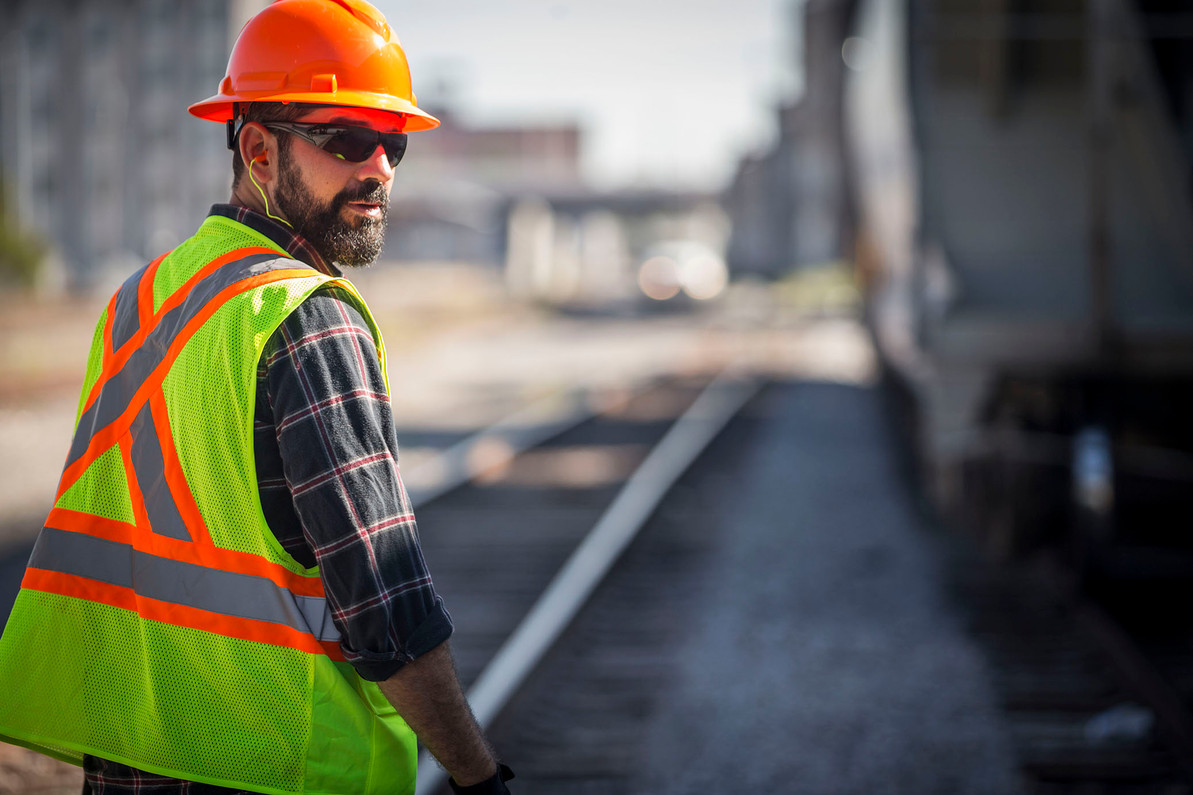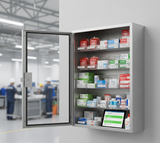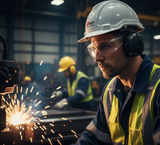Silence the Danger, Save Your Hearing: Workplace Hearing Protection Matters
The sounds of machinery, tools, or engines can be a regular part of many workplaces. However, while these sounds may seem normal, they can be harmful. Excessive noise in the workplace is a serious hazard, and it's a leading cause of permanent hearing loss. Protecting hearing on the job is achievable and crucial for maintaining healthy hearing.
The Workplace Noise Threat:
Many industries expose workers to dangerous noise levels. Construction sites, manufacturing plants, aviation, and some agricultural or landscaping equipment can create noise levels that exceed safe limits.
- Understanding Decibels: Sound intensity is measured in decibels (dB). OSHA requires employers to implement a hearing conservation program when noise exposure is at or above 85 decibels averaged over 8 working hours. Any sound over 85 dBA can potentially damage hearing, especially with prolonged exposure. As a general rule, if you have to raise your voice to talk to someone at arm's length (about 3 feet away), the noise is likely at a hazardous level.
- The Damage is Real: Loud noise can damage the delicate hair cells in the inner ear, which cannot regenerate. This damage can lead to noise-induced hearing loss (NIHL), and potentially tinnitus (a constant ringing in the ears), which some workers find unbearable.
Building a Culture of Hearing Protection:
Protecting hearing in the workplace requires collaboration between employers and employees.
For Employers:
- Implement a Hearing Conservation Program (HCP): If a workplace has noise levels exceeding 85 dBA, a comprehensive HCP is required under OSHA regulations. A strong HCP includes:
- Noise Monitoring: Regularly measure noise levels to identify high-risk areas and ensure protective measures are effective.
- Audiometric Testing: Provide baseline and annual hearing tests to monitor employee hearing health.
- Hearing Protection Devices (HPDs): Provide a variety of suitable HPDs, such as earplugs and earmuffs, at no cost to employees.
- Training and Education: Ensure employees understand the risks of NIHL, how to correctly use HPDs, and the purpose of audiometric testing.
- Recordkeeping: Maintain accurate records of noise exposure, audiometric test results, and training.
- Implement Noise Reduction Measures:
- Engineering Controls: Modify or replace noisy equipment with quieter alternatives, or install sound barriers.
- Administrative Controls: Schedule noisy tasks for shifts with fewer workers or rotate employees out of high-noise areas.
- Create a Supportive Environment: Encourage open communication about noise safety and address any concerns employees may have.
For Employees:
- Wear Hearing Protection Consistently: Always wear HPDs in designated noisy areas.
- Choose the Right HPD: Select HPDs that are comfortable and appropriate for the noise levels you're exposed to. Consider the diverse options from reputable brands like PIP and Pyramex Safety:
- Earplugs:
- Pyramex offers a variety of earplugs with an NRR range of 22 to 34, available in disposable and reusable versions. Their disposable foam plugs come in different shapes for a better fit, and they also offer reusable options with stems and cords, and banded designs for quick access.
- PIP provides disposable and reusable earplugs in various shapes and materials, including polyurethane foam and bio-based foam. Their EZ-Twist Hybrid earplugs offer easy insertion and can be used as disposable or reusable. PIP also offers a complete line of hearing protection products for all-day comfort and optimal sound attenuation.
-
, suitable for industries like food processing where contamination control is crucial.Both brands offer metal-detectable earplugs
- Earmuffs:
- Pyramex earmuffs come in passive and electronic versions with NRRs from 19 to 26. Passive options include traditional, low profile, and cap-mounted styles, available in various colors. Electronic earmuffs feature level-dependent systems to allow communication while blocking hazardous noise, and some have Bluetooth capability for wireless listening and communication.
- PIP offers passive earmuffs with adjustable headbands and features like soft memory foam ear cushions for extended comfort. Their VSeries™ earmuffs are color-coded for easy selection based on noise levels, from low (V1) to extreme environments (V3). PIP also offers cap-mounted earmuffs designed to fit most hard hats.
- Double Protection: In extremely loud environments (100 dBA or higher), consider wearing both earplugs and earmuffs for increased protection, following OSHA recommendations.
- Earplugs:
- Use HPDs Correctly: Follow the instructions for proper insertion and fitting to ensure a good seal and maximum protection.
- Take Breaks: If possible, take breaks in quiet areas away from the noise.
- Attend Hearing Tests: Participate in regular audiometric testing to monitor hearing health.
- Communicate Concerns: If there are any concerns about noise levels or hearing, talk to a supervisor or the designated Hearing Conservation Coordinator.
Benefits of a Strong Hearing Conservation Program:
A strong HCP protects employee hearing and benefits the workplace as a whole:
- Improved Employee Health: Reduced risk of NIHL and associated health issues like tinnitus.
- Legal Compliance: Ensures compliance with OSHA regulations and reduces legal risks.
- Increased Productivity: Healthy employees are more productive and efficient.
- Reduced Costs: Lower healthcare costs and fewer workers' compensation claims.
- Enhanced Safety: Improved communication and awareness of hazards can reduce accidents.
By understanding the risks of workplace noise and taking proactive steps to protect hearing with reliable options like those from PIP and Pyramex Safety, a safer, healthier, and more productive work environment can be ensured.
8th Jul 2025
Recent Posts
-
Beyond the Big Box: Why Yoursafetycompany.com is the Smarter Choice for Your First-Aid Program
When it comes to workplace first aid, ensuring your business is compliant and your employees are pro …1st Jan 2026 -
The 2026 Safety Checklist: Is Your Crew Truly Protected?
As we move into the new year, it’s the perfect time to look past the daily grind and evaluate the ge …23rd Dec 2025 -
Beyond the Buzz: Why Proper Hearing Protection is Non-Negotiable on Your Job Site
On any given workday, the sounds of progress—drills, saws, heavy machinery, and even loud conversati …22nd Dec 2025



